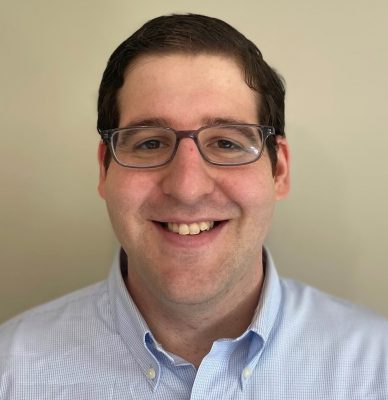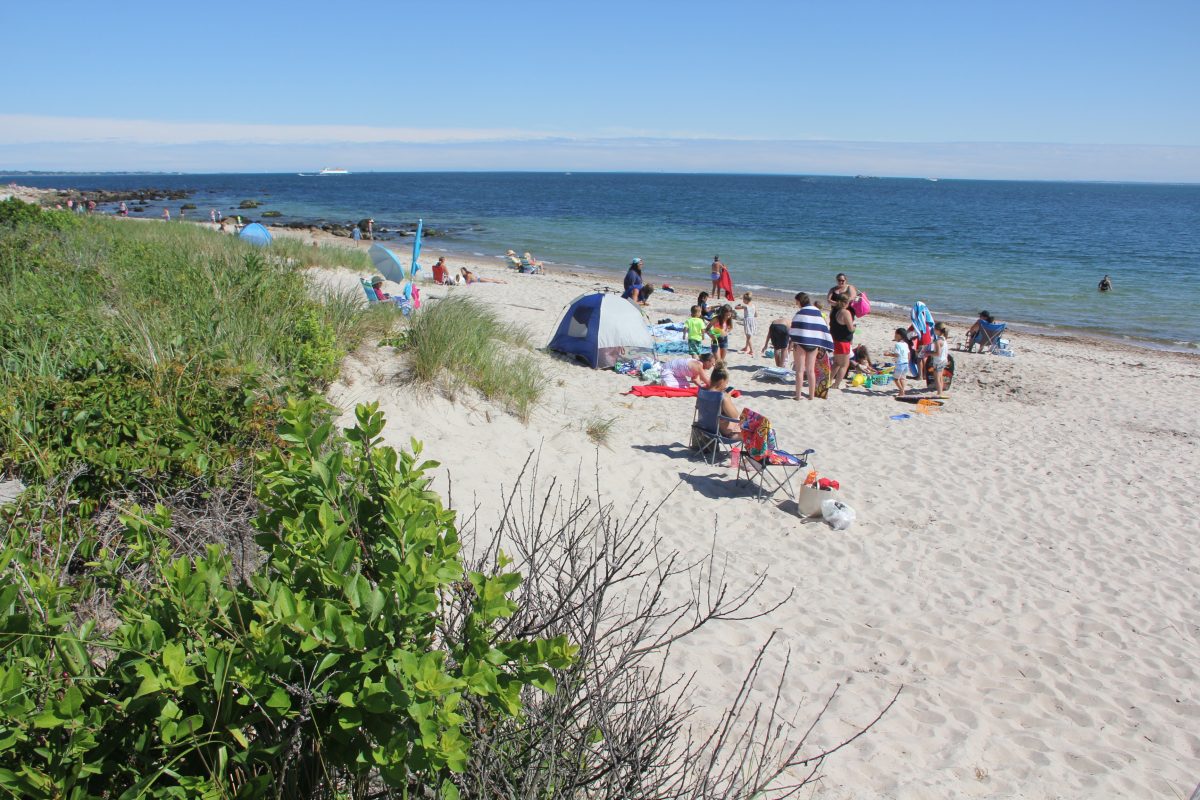By Judy Benson
Oversimplified, shoreline beaches are where the sand meets the sea.
Too often, this two-dimensional view has become the foundation of efforts to restore storm and erosion-battered beaches on Long Island Sound and other coastal areas. These projects mainly seek to widen the flat open sand swathe to maintain maximum recreational worth and protect nearby areas from storm and flood damage. Dune grass, beach pea and the dunes these and other plants inhabit along the shore have largely been left out of the equation.

But thanks to a new marine and coastal economics fellowship created by Connecticut Sea Grant, a Yale University doctoral candidate will spend the next year and a half developing restoration tools that account for the real-world complexity and value of natural and manmade features beyond the sand. The fellowship is funded with $20,000 of the federal funds allocated to CT Sea Grant.
“I’ve been interested in coastal ecosystems since I was young, growing up in Miami,” said Ethan Addicott, 29, who is pursuing his doctorate in environmental and resource economics at Yale and was chosen for the fellowship post. “I’m working to quantify the relationship between healthy dune ecosystems and property values, to enhance the relationship between natural resources and management decision making.”
CT Sea Grant Director Sylvain De Guise said Addicott’s project will accomplish the two main goals of the new fellowship. It was created to help train a new generation of students in marine and coastal economics, and to give coastal communities new resources to draw on in making decisions about threatened coastal areas. With sea level rise and more frequent, intense storms threatening coastlines worldwide, local communities need new tools to make more strategic decisions about where to use limited resources, he added. The two-part product of Addicott’s work—a specialized map to be used with a process for keeping it updated—would be offered to communities to do just that.
“This will help communities to be better equipped to leverage grants,” De Guise said.
Robert Pomeroy, recently retired marine resource economist at CT Sea Grant and UConn professor emeritus, said he expects Addicott’s work will have direct practical application not just for municipal land use officials, but for private coastal property owners and the public.
“It’ll be a very useful tool,” he said. “We all have to make some decisions about investing in our coastlines and trying to balance biological and human impacts as well as economic impacts.”
Addicott won’t be starting from scratch. In an earlier phase of his doctoral work, he conducted a study of North Carolina barrier beaches as a trial for what he plans for Connecticut. But the beaches he looked at in North Carolina were relatively homogeneous. Connecticut’s beaches, by contrast, are more varied—there are small, relatively isolated “pocket” beaches, barrier beaches, and cobbled beaches, for example, each with different vegetation, adjacent marshes and other natural features that will be assessed for their economic value.
The assessments would be based on data derived from high-resolution satellite imagery of the Connecticut shore available from multiple public and private sources, then combined with coastal property data. These assessments would be transferred onto a map showing the value of natural beach features in relation to nearby property values in Connecticut, along with an explanation of the processes used to develop the values and revise them as conditions change. Strictly static estimates can lose relevance quickly in dynamic environments such as beaches, Addicott noted.
Robert Johnston, a member of CT Sea Grant’s senior advisory board who’s worked on natural resource valuation projects since the early 1990s, said Addicott’s project will build on earlier work that connected property values and natural systems. The unique aspect, Johnston said, is that it will result in the kind of highly localized estimates that are most meaningful to property owners and communities, and that it will use a suite of sophisticated data that will give “a real richness” to the tools created.
“The primary thing this accomplishes is that it helps to establish the relationship between biophysical and ecosystem services along the coast,” said Johnson, who is professor of economics and director and research professor at the George Perkins Marsh Institute at Clark University in Worcester, MA. “And it will provide an economic rationale for coastal restoration.”
Pomeroy said that while the final product will be uniquely relevant to Connecticut’s shoreline, it could be adapted into a tool usable in coastal states nationwide.
That’s what Addicott is hoping. Overall, he said, too many of the remedies used for today’s coastal challenges are too much like trying to fill a leaky bucket. His work, he said, could be one way of helping plug the hole, so restoration work is more effective and long-lasting.
“We can do better,” he said.

For more information, contact Judy Benson, communications coordinator, at: judy.benson@uconn.edu.